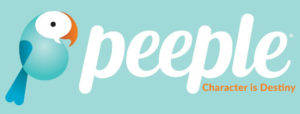
About US$21.8 billion in global ad revenues have been lost so far this year due to ad blockers, according to a report Pagefair released this week in partnership with Adobe.
Consumers increasingly are opting for tools to shut down ads before they pop up. By next year, the U.S. alone should account for about $20 billion in blocked ad revenue, the report predicts.
Pay-TV providers and print media outlets have been attempting to play by the Internet’s ever-evolving rules, but market researchers have isolated a rising threat as traditional platforms make the transition to digital.
Ad revenue losses increasingly can be pegged to the proliferation of ad-blocking extensions, according to the report.
About 198 million people around the world use ad-blocking software, such as AdBlock Plus, the researchers found. That figure was up from the previous year by about 41 percent globally and approximately 48 percent in the U.S.
At the Heart of It
The reason is simple: Publishers have let advertisers target their audiences with annoying ads, said Johnny Ryan, head of ecosystem at PageFair.
“Increasingly brash ads interrupt users’ experiences, slow their machines, and snoop on their data,” he told the E-Commerce Times. “On the consumer side, blocking these annoying ads has become very easy. With a few clicks you can install software on your browser that blocks ads. Users are voting with their browsers and saying ‘no’ to intrusive advertising.”
Advertisers and broadcasters have worked together to ensure DVR customers still get a healthy dose of ads, despite having the option to skip through commercials. While there are some similarities shared between ad blockers and DVR technologies designed to skip ads, the former can be considered “active” and the latter “passive,” noted Charles King, principal analyst for Pund-IT.
Though the result is the same, there’s a difference between “active” ad blockers like AdBlockPlus and “passive” technologies like those in DVRs that record commercials but allow viewers to skip them automatically.
“Active blockers have been around for a while,” King told the E-Commerce Times. “In fact, I’d argue that the initial popularity of Mozilla’s Firefox browser, launched in 2004, was its inclusion of a pop-up ad blocker — Microsoft belatedly added a similar feature to IE months later. For that matter, you could also argue that TV mute controls and DVR/VCR fast-forward functions qualify as ad blockers.”
With users consciously denying websites and TV broadcasters ad dollars for more than two decades, it’s up to publishers and their advertising partners to spur change — or else the missed opportunities will continue to mount.
“Users will continue to rebel, seeking better alternatives, and large tech companies like Facebook and Apple will step in and set the rules for the publishing industry,” Ryan said.
The music industry failed to offer consumers a viable alternative to digital piracy and ultimately was forced to accept the rules Apple established with iTunes, he pointed out.
It’s deeply worrying, “because if publishers retreat into walled gardens like Apple News and Facebook Instant Articles, the large tech companies will become the gatekeepers of what once was free content, and this will end the open Web as we know it,” Ryan said.
The Cure
Mobile ad blocking has been picking up steam in Asia and is poised to break out in the West, PageFair and Adobe found.
About 40 percent of users of Firefox for Android employed ad-blocking software on their smartphones and tablets. When the next version of iOS comes out with native ad blocking, mobile advertisers and publishers will be in for a huge shift.
Safari Mobile maintains about a 52 percent share of the mobile browser market, and the number of users opting to use iOS 9’s native ad blocking is likely to trend up toward the usage levels of Firefox for Android, PageFair predicted.
Despite the grim outlook for digital ad revenues, the crisis presents an opportunity, PageFair’s Ryan pointed out.
PageFair can make ads unblockable if the content is respectful, he said.
PageFair, which uses technology to help websites recover lost revenues, has been active on more than 2,000 sites, has tracked more than a billion ad-block hits in the last month alone, and has been working with global leaders in the ComScore 100, Ryan said.
“We know from our survey data that people accept certain formats of ads and are happy to help publishers generate revenue. PageFair can serve these ads to [people using] ad blockers, and it so happens that ad blockers, seeing no other ads, have a higher click-through rate than general users!”
PageFair intends to expand fast to meet the growing demand, said Ryan.
Meanwhile, advertisers may wish to adopt such platforms in an effort to evolve along with the tech that’s currently hurting them, Pund-IT’s King said.
There are also social approaches, such as click bait, to subverting ad blocking, he added.
“Successful advertising is really a matter of diverting the audience’s attention from the subject at hand to one the advertiser engineers,” King said. “At the end of the day, technology can’t protect willingly diverted consumers.”












































Social Media
See all Social Media